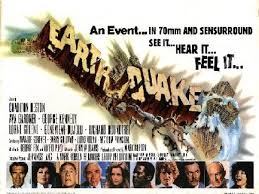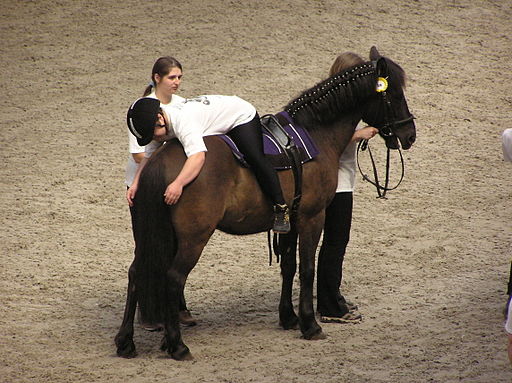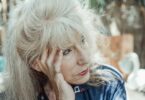 aNewDomain — My friend Veronica Lac gave some of her time away yesterday to demonstrate the theory and practice of equine-assisted therapy. I’ve been resisting this for a long time: I’ve heard a lot of claims that seem exaggerated or even fanciful. But, mostly due to social pressure, I went anyway.
aNewDomain — My friend Veronica Lac gave some of her time away yesterday to demonstrate the theory and practice of equine-assisted therapy. I’ve been resisting this for a long time: I’ve heard a lot of claims that seem exaggerated or even fanciful. But, mostly due to social pressure, I went anyway.
The session was done at Gypsy Wind Ranch.
The very first thing that happened to me there was this: Veronica said I should feel free to wander out of the training room if I needed to.
 It was the first time anyone has ever taken the time to acknowledge and love that need, the autistic restlessness and sometimes painful experience of others. So before we had even gotten started I was touched, emotional.
It was the first time anyone has ever taken the time to acknowledge and love that need, the autistic restlessness and sometimes painful experience of others. So before we had even gotten started I was touched, emotional.
There was a little therapy, then we met the horses. We sat in chairs in a barn. The animals were led into a paddock and allowed to just do what they do: stand, roll around, groom one another, look back at us. We were invited to attend to what we felt looking at the horses.
And I felt nothing.
At first, I panicked. I was supposed to feel something, right? Everyone else was probably feeling something. And as I focused on the other people, a rising blue tide of panic swamped my stomach, flowed over my sternum, kept rising.
I focused back on the horses and the blue tide receded, dissolved, disintegrated.
 And then I went back in time.
And then I went back in time.
In the 1990s I was hospitalized for depression. Too much grief internalized for too long, from losing some children to losing my father to losing my nation of origin and all the friends and family who lived there. Keeping all that loss inside, powering through it in order to get “the job” done, made me ill.
At the hospital, psychiatrists did what psychiatrists do: They gave me antidepressants.
I’m no fan of drugging sadness. But the experience was instructive in more ways than one.
When I took the pills, almost right away my sadness became numb. I could not feel the grief that occupied my middle in nearly endless supply. And that not-feeling awakened me to what I had been feeling but ignoring for years upon years. It was a sickness I didn’t know I had, a load I didn’t know I was carrying.
Imagine you had never wondered about your eyesight, and someone gives you glasses. You wear them for the first time and – a miracle!
You mean I could have been seeing this way all along?
And this was what it was like to look at the horses. All my hard-won empathy for humans meant nothing, none of my various sensitivities signified.
I looked at them and felt nothing, and that feeling was a tremendous relief.
Later, I sat on a horse bareback. The exercise was to be in touch with all the feelings that arose from the contact, the eventual movement. To be aware of posture, its potential significance. Veronica said later that the big guys tend to be more afraid of the horses than the women are. I wasn’t – I’ve been on them before, grew up with them around – but I can see it.

How many times do we meet people bigger than us, get enfolded in the arms of someone not just larger but much larger? For women, often. For big men, never.
When I climbed onto the animal’s back (Shiloh, his name was) I immediately was moved. I felt his strength: I’m a big man, and worried about his capacity to carry me safely, about his comfort. But I was nothing to him.
He was a thousand-pound slab of muscle, could have twitched me off onto the dirty stable floor like California is always trying to do with LA.
Next, he took a single, shifting step to perfect his balance. And while I was above the ground, my feet no longer touching it, I could feel it through his back, his leg, his hoof.
The step resonated up through his body and through mine and I was grounded, solid.
When he started to walk, the trial was one of balance, of learning (quickly) to move with his movements, to stay stable in a shifting seat. All of that was doubtless very important. There were other exercises, too, in horse empathy, in horse culture, horse language; in intentionless action.
And while I’m not going to go gaga for horses, I have a little more understanding now for those who do.
But I will always remember these two things: being invited to be who I am, differences included; and being five feet off the ground — but still totally grounded.
For aNewDomain, I’m Jason Dias.
Image one: GypsyWindRanch.com, All Rights Reserved; image two: MaverickPhilosopher.typepad.com, All Rights Reserved; image three: DVDbeaver.com, All Rights Reserved; cover image: by user:karakal (Own work) [GFDL or CC BY-SA 3.0], via Wikimedia Commons.













